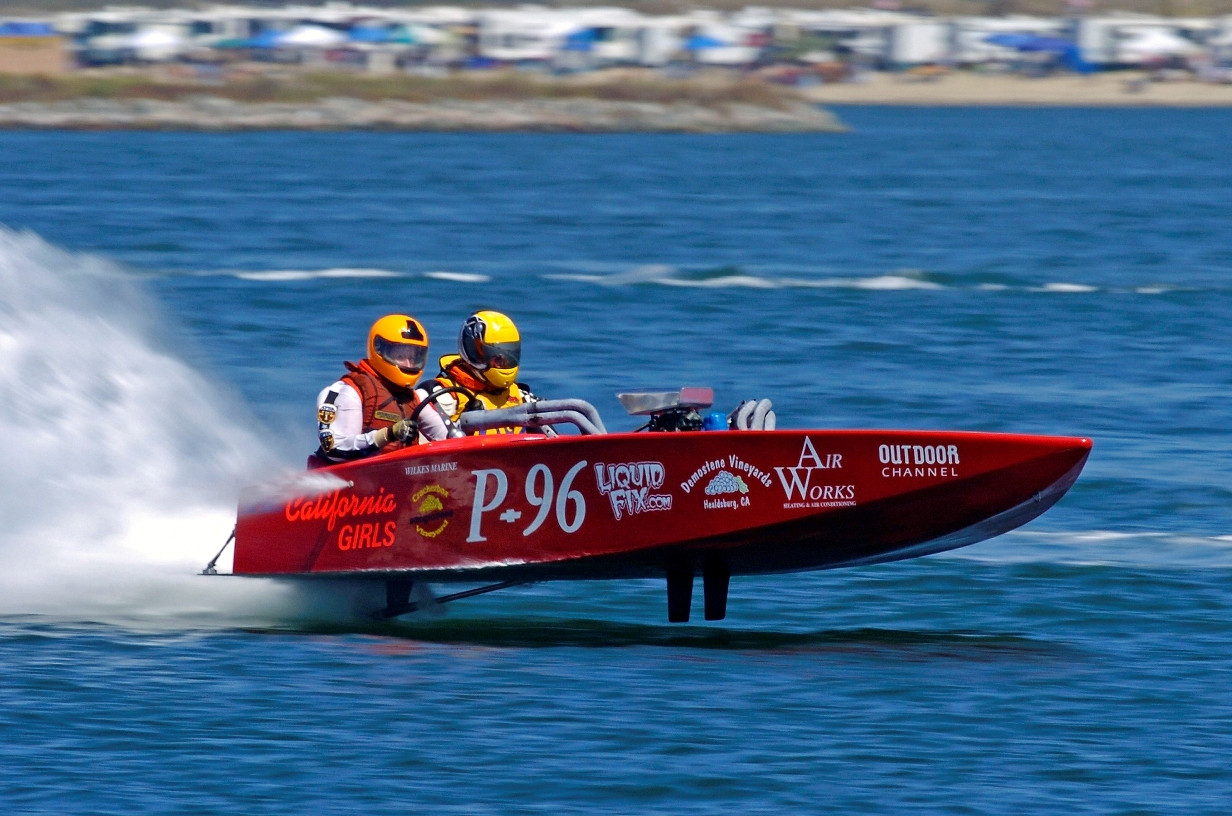According to Bernoulli's principle (aero and fluid) dynamics. High velocity creates force/pressure. Aeroplane have wings. F1 cars have wings. But why don't boat have wings too? (underwater for extra lift) perhaps..
-
1$\begingroup$ Boats do have wings - they are called hydrofoils. $\endgroup$– John RennieCommented Sep 22, 2016 at 7:22
-
$\begingroup$ Appriciates your answer. Please write as an answer so I can tick it as the answer $\endgroup$– NikCommented Sep 22, 2016 at 7:29
-
$\begingroup$ look cdn.trendhunterstatic.com/thumbs/vey-yacht.jpeg $\endgroup$– anna vCommented Sep 22, 2016 at 7:33
-
$\begingroup$ I thinnk that generally boats do not have wings because the velocity attainable in the water has to be large in order to give a lift , and boats are slow movers. Raising the velocity is expensive. Sails are a type of wing after all. $\endgroup$– anna vCommented Sep 22, 2016 at 7:38
-
1$\begingroup$ For the same reason that airships don't: they're buoyant and don't need them for lift. However, they do have wing like surfaces to help trim / steering. $\endgroup$– Selene RoutleyCommented Sep 22, 2016 at 8:05
3 Answers
I believe there is an important vocabulary issue here. As far as I understand, the word "wing" usually associated with "flying". From that perspective; birds have wings, aeroplanes have wings but not F1 cars or boats or anything that does not fly. In other words, wings are used to create a lift for flying objects in air. Boats are kept on water thanks to a lift from water not air, therefore they do not need wings for lift.
However on different vehicles wing-like structures exists to serve different purposes, mostly efficiency (low air friction), stability and control. Any vehicle that goes faster than certain speed can have wing-like structures, this includes ordinary and sports cars, F1 cars, racing boats etc. As mentioned in one the comments above to get any force from a wing-like structure in air, either the flow has to be fast (high speed) or the area of the wing-like structure has to be large (such as windmills). I believe, engineers make calculations for the compromise between the size of the structure and the gain and build wing-like structures on vehicles where necessary. These parts are not always called wings. See attached pictures.
 https://s-media-cache-ak0.pinimg.com/originals/83/4c/0e/834c0e487cd36d36ee816accadd0611f.jpg
https://s-media-cache-ak0.pinimg.com/originals/83/4c/0e/834c0e487cd36d36ee816accadd0611f.jpg
 https://i.ytimg.com/vi/4WM7dM3oyhc/maxresdefault.jpg
https://i.ytimg.com/vi/4WM7dM3oyhc/maxresdefault.jpg
 http://img.autobytel.com/car-reviews/autobytel/130984-10-cool-cars-with-wings/2016-Subaru-WRX-STI-rear-view.jpg
http://img.autobytel.com/car-reviews/autobytel/130984-10-cool-cars-with-wings/2016-Subaru-WRX-STI-rear-view.jpg
 http://www.apba.org/sites/all/files/images/classes/Inboard_Crackerbox_P-96.jpg
http://www.apba.org/sites/all/files/images/classes/Inboard_Crackerbox_P-96.jpg
 http://www.apba.org/sites/all/files/images/classes/SE_UnlimitedLights_PaulDroullard,%20UL-9.jpg
http://www.apba.org/sites/all/files/images/classes/SE_UnlimitedLights_PaulDroullard,%20UL-9.jpg
 http://www.firsttimemarinadelrey.com/images/under-a-sailing-yacht.jpg
http://www.firsttimemarinadelrey.com/images/under-a-sailing-yacht.jpg
-
1$\begingroup$ Two things -- cars, particularly F1 and IndyCar, do call their parts "wings" and they are used to generate downforce (negative lift) so I disagree with the terminology dispute here -- wings are not just for flying stuff. Second thing -- please cite all of your images and please verify you are conforming with any license requirements attached to them. $\endgroup$– tpg2114Commented Sep 22, 2016 at 14:05
-
$\begingroup$ Thanks for the second thing, I have added the links to the images. $\endgroup$ Commented Sep 22, 2016 at 14:31
Hydrofoils are boats/ships fitted with "wings", better known as foils, which act in a way very similiar to the wings fitted to aircraft.
As a hydrofoil craft gains speed, the hydrofoils lift the boat's hull out of the water, decreasing drag and allowing greater speeds.
In these pictures, you can see the layout of the foils, underneath the ship. the basic idea being that the less of the ship's hull is in the water, the less drag occurs and the more efficient the ship becomes.
Text and Image Source: Wikipedia Hydrofoils
Since air and water are governed by similar fluid equations—albeit with different levels of viscosity, density, and compressibility—the hydrofoil and airfoil (both types of foil) create lift in identical ways. The foil shape moves smoothly through the water, deflecting the flow downward, which, following Newton's Third Law of Motion, exerts an upward force on the foil. This turning of the water creates higher pressure on the bottom of the foil and reduced pressure on the top. This pressure difference is accompanied by a velocity difference, via Bernoulli's principle, so the resulting flowfield about the foil has a higher average velocity on one side than the other.
When used as a lifting element on a hydrofoil boat, this upward force lifts the body of the vessel, decreasing drag and increasing speed. The lifting force eventually balances with the weight of the craft, reaching a point where the hydrofoil no longer lifts out of the water but remains in equilibrium. Since wave resistance and other impeding forces such as various types of drag (physics) on the hull are eliminated as the hull lifts clear, turbulence and drag act increasingly on the much smaller surface area of the hydrofoil, and decreasingly on the hull, creating a marked increase in speed.
Although they can allow the shop greater efficiency in increasing in speed for a given engine power and a decrease in drag, hydrofoils do have some significant disadvantages.
Hydrofoils are impractical if they operate in waters that are not perfectly clear of obstructions such as floating/semi submerged objects and large, heavy marine animals, such as dolphins, tuna, seals or whales. If the ship collides with these objects, the light construction of the foil and the struts may give way, creating a risk that the ship may roll upside down at high speed, which has reduced their popularity amongst ferry operators.
Hydrofoils are also relatively expensive to build and maintain.
There is a rather peculiar type of "boat" that does have wings, because it flies just off the surface. It's called an Ekranoplan
A ground effect vehicle (GEV) is a vehicle that is designed to attain sustained flight over a level surface (usually over the sea), by making use of ground effect, the aerodynamic interaction between the wings and the surface. Among the best known are the Soviet ekranoplans, but names like wing-in-ground-effect (WIG), flarecraft, sea skimmer, or wing-in-surface-effect ship (WISE) are also used.


